
Art Gharana — 9 Mins read
Top Dance Moves to Impress Friends
Dance

When you think of dancing from India, what comes to mind first? Perhaps the graceful hand gestures of Bharatanatyam dance or the vibrant energy of a Bollywood number. India’s dance traditions are as diverse as its culture—some rooted in centuries-old spiritual expression, others born from contemporary creativity and global influences. But how do these two worlds—traditional Indian dance and modern styles—truly compare?
In this blog, we’ll explore the contrasts and connections between classical Indian dancing and today’s contemporary forms. From the storytelling depth of classical dance forms of India like Bharatanatyam and Kathak, to the upbeat fusion styles you’ll often find in Bollywood dance near me classes, each carries its own rhythm, purpose, and appeal. Whether you’re someone curious about enrolling in bharatanatyam classes near me or just fascinated by how Indian dance continues to evolve, you’ll find valuable insights here.
As we move forward, we’ll uncover not just the techniques and cultural significance behind these dance forms but also the unique benefits they bring to learners across Canada, the US, and beyond. So, are you ready to step into the rhythm and discover how tradition and modernity meet on the dance floor?
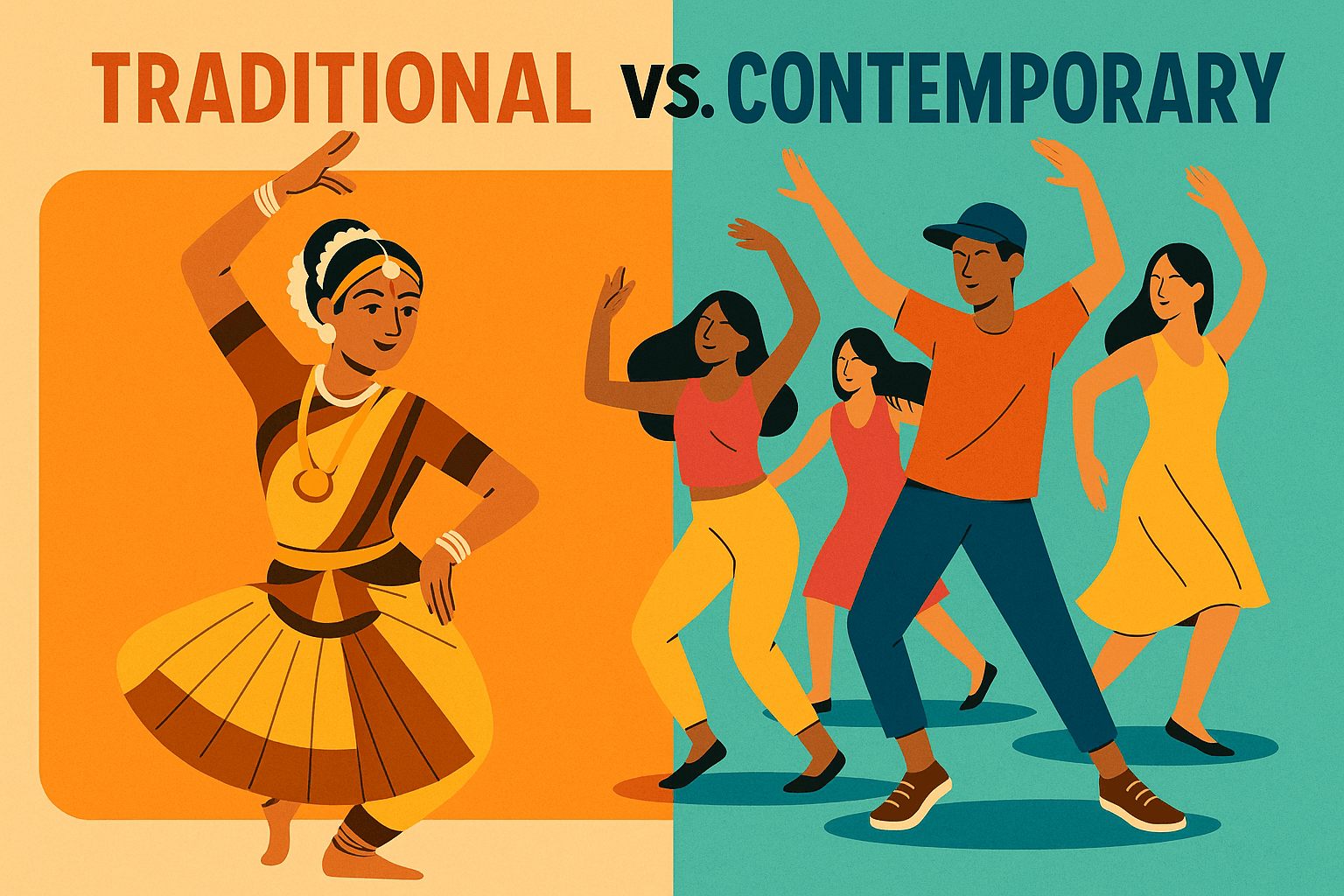 Indian dance is more than just movement—it’s a language of expression that has evolved across centuries. On one side, we have traditional Indian dance, deeply rooted in spirituality, storytelling, and cultural heritage. On the other, we see contemporary styles shaped by globalization, technology, and the influence of modern media. Together, they paint a fascinating picture of how art adapts to time while staying true to its essence.
Indian dance is more than just movement—it’s a language of expression that has evolved across centuries. On one side, we have traditional Indian dance, deeply rooted in spirituality, storytelling, and cultural heritage. On the other, we see contemporary styles shaped by globalization, technology, and the influence of modern media. Together, they paint a fascinating picture of how art adapts to time while staying true to its essence.
But what truly sets them apart? And more importantly, how do they connect? Let’s take a closer look.
Traditional forms like Bharatanatyam dance or Kathak are often described as the soul of Indian culture. These dances:
If you’ve ever searched for bharatanatyam classes near me or classical dance classes near me, you’ve likely noticed how these art forms still thrive globally, especially among Indian communities in Canada and the US. They remain a way of staying connected to one’s roots while developing a deep appreciation for cultural history.
Now, let’s shift the spotlight. Contemporary Indian dance grew from blending classical structures with global trends like jazz, hip-hop, and ballet. Unlike the rigid frameworks of classical styles, these are:
This evolution reflects India’s openness to change while still celebrating its traditions.
What’s remarkable is that both classical Indian dancing and contemporary forms play a vital role:
Together, they highlight the diversity of dancing from India, showing that tradition and modernity are not rivals—they’re partners in storytelling.
So, whether you’re drawn to the discipline of classical dance forms of India or the vibrant energy of Bollywood-inspired choreography, exploring both worlds can give you a richer perspective of how dance continues to inspire across generations.
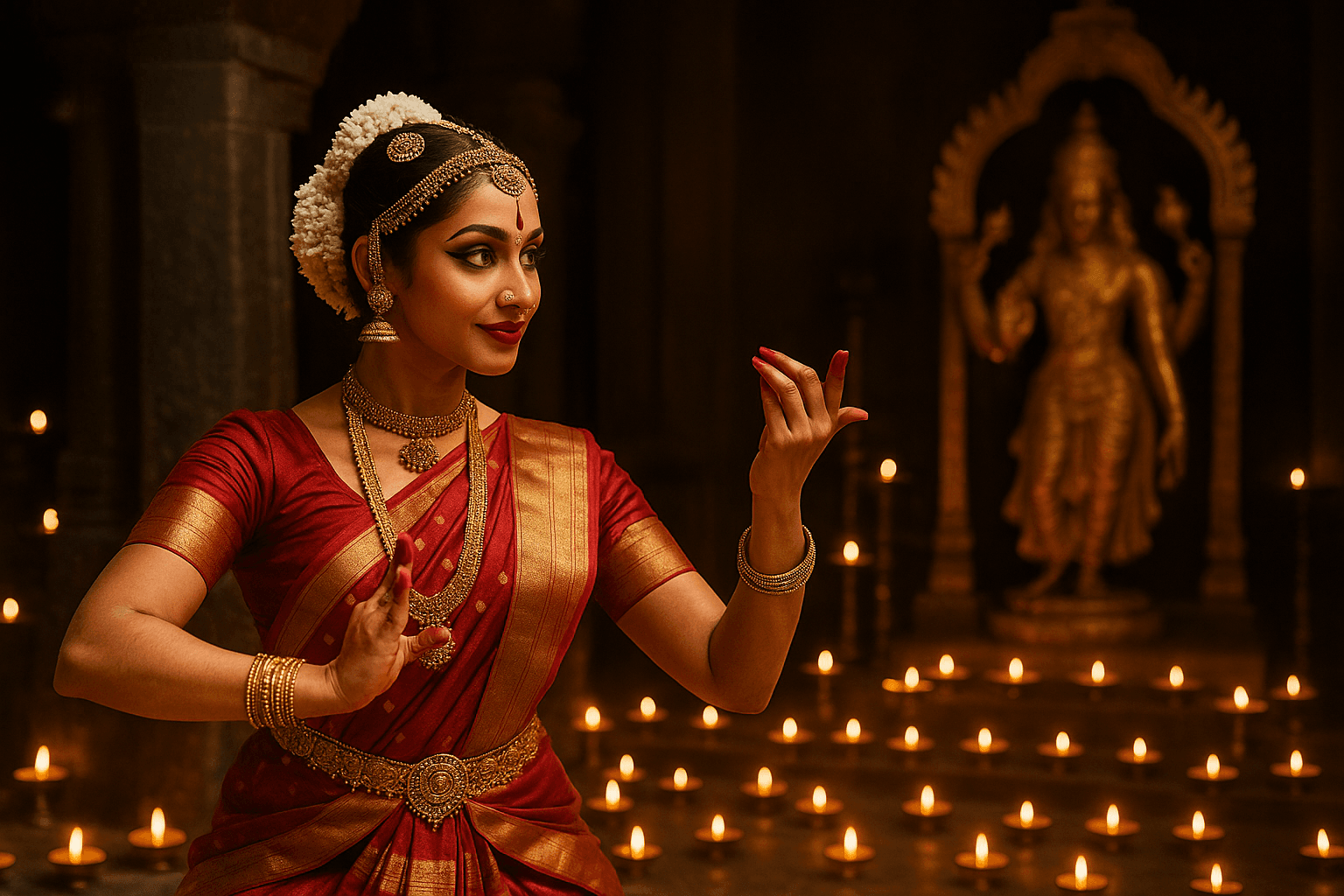 When we talk about traditional Indian dance, we’re not just discussing performance art—we’re diving into centuries of cultural storytelling, devotion, and discipline. These dances are more than movements; they’re living traditions that connect generations across time and space. Have you ever wondered why these styles, despite being so ancient, are still celebrated and practiced worldwide? The answer lies in their depth and timeless appeal.
When we talk about traditional Indian dance, we’re not just discussing performance art—we’re diving into centuries of cultural storytelling, devotion, and discipline. These dances are more than movements; they’re living traditions that connect generations across time and space. Have you ever wondered why these styles, despite being so ancient, are still celebrated and practiced worldwide? The answer lies in their depth and timeless appeal.
Among all classical dance forms of India, Bharatanatyam dance stands out as one of the oldest and most revered. Originating in Tamil Nadu, this form is characterized by:
Today, learners across Canada and the US search for bharatanatyam dance classes near me to stay connected to their cultural roots. If you’re curious to begin your own journey, explore Online Bharatanatyam classes to experience the art form from the comfort of home.
While Bharatanatyam is widely recognized, India boasts several other classical traditions, each with its own charm:
These classical indian dancing traditions may differ in style, but all share a common purpose—preserving stories, values, and spirituality through art.
What makes traditional Indian dance so unique is its layered meaning. Each gesture, costume, and rhythm carries symbolism:
For many, learning these styles isn’t just about becoming a dancer; it’s about becoming a storyteller and cultural ambassador.
So, whether you’re searching for classical indian dance classes near me or looking to understand the dance of Bharatanatyam, remember this—these traditions aren’t just performances; they’re windows into India’s soul. By embracing them, you’re not only learning movement but also preserving a priceless heritage.
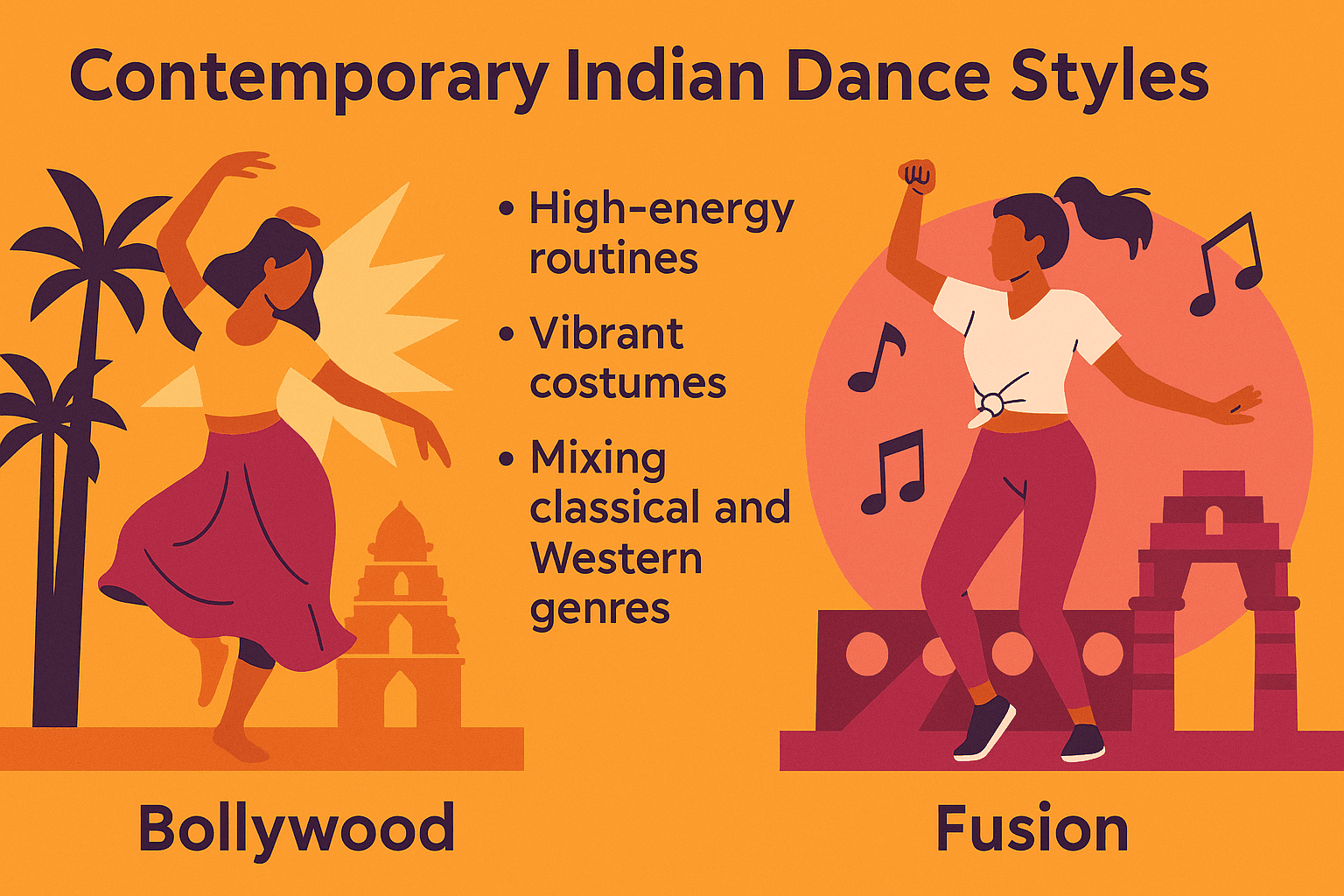 While traditional dance forms guard India’s heritage, contemporary styles open the doors to creativity, innovation, and global connection. If classical indian dancing is the root, then contemporary dance is the blossoming branch that adapts to modern times. But what exactly makes these styles so appealing to today’s generation?
While traditional dance forms guard India’s heritage, contemporary styles open the doors to creativity, innovation, and global connection. If classical indian dancing is the root, then contemporary dance is the blossoming branch that adapts to modern times. But what exactly makes these styles so appealing to today’s generation?
It’s impossible to talk about contemporary Indian dance without mentioning Bollywood dance. Bursting with energy, vibrant costumes, and expressive choreography, it has become one of the most recognizable representations of dancing from India. Whether it’s performed at weddings, competitions, or cultural festivals, Bollywood dance has a universal charm.
And the best part? It’s accessible to everyone. You’ll find plenty of “bollywood dance near me” searches in Canada and the US, showing how this style has become a favorite for both beginners and professionals. Curious to try it yourself? Explore Online Bollywood dance to experience the joy of learning from anywhere.
Contemporary Indian dance thrives on blending. By mixing Bharatanatyam’s grace with jazz, or Kathak’s spins with hip-hop, dancers create powerful fusions that captivate audiences worldwide. This adaptability makes the art form exciting, as no two performances feel the same.
Some popular fusions include:
Another driving force behind contemporary dance’s popularity is the growing number of Indian dance schools outside India. In cities across Canada and the US, these schools not only teach Bollywood but also experiment with cross-cultural collaborations, giving students a taste of tradition and modernity in one space.
So why are more people drawn to contemporary Indian styles? Here’s why:
In short, contemporary dance has become the bridge that carries India’s rich cultural identity into the modern world. Whether you’re searching for bollywood dance near me or joining a local Indian academy, you’re not just learning steps—you’re becoming part of a movement that celebrates change while honoring tradition.
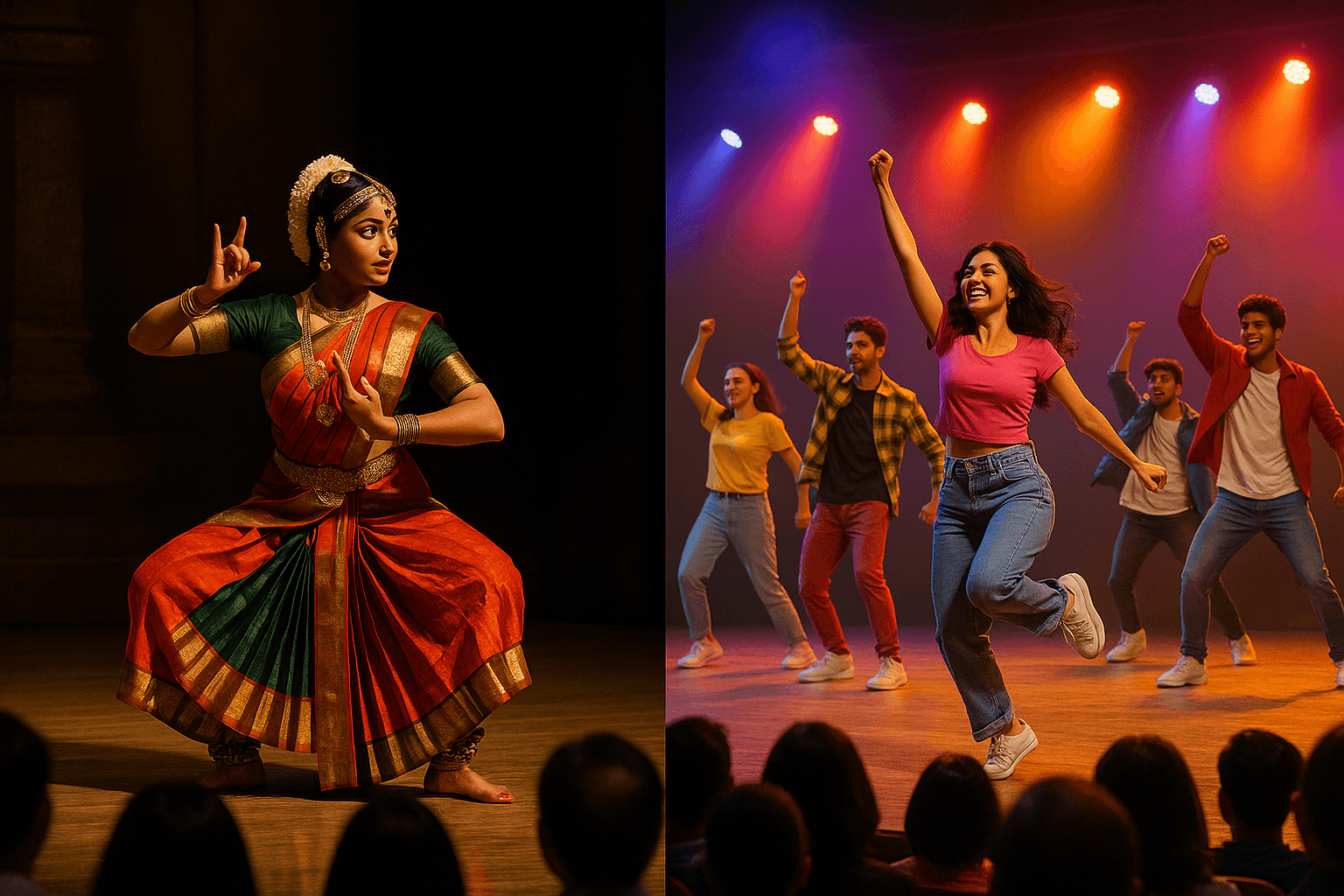 At first glance, both traditional and contemporary Indian dances may appear similar—after all, they share the same cultural foundation. But once you look closer, the contrasts are striking. From posture and rhythm to costumes and purpose, each style tells its story in a unique way. So, what exactly sets classical indian dancing apart from its modern counterpart? Let’s explore together.
At first glance, both traditional and contemporary Indian dances may appear similar—after all, they share the same cultural foundation. But once you look closer, the contrasts are striking. From posture and rhythm to costumes and purpose, each style tells its story in a unique way. So, what exactly sets classical indian dancing apart from its modern counterpart? Let’s explore together.
Traditional Indian dance is precise and codified. Every mudra (hand gesture), step, and expression carries symbolic meaning, especially in forms like Bharatanatyam dance or Kathak.
Contemporary dance, on the other hand, values flexibility. Movements are fluid, improvised, and often draw from multiple influences such as jazz, hip-hop, or ballet.
If you’ve ever compared a temple performance of Bharatanatyam with a high-energy Bollywood routine, you’ll instantly notice how discipline contrasts with freedom.
Both worlds offer something beautiful: the discipline of traditional indian dance builds a strong foundation, while contemporary dance invites experimentation and global collaboration. Together, they create a balanced ecosystem where heritage and innovation can thrive side by side.
So, whether you’re drawn to the dance of Bharatanatyam with its sacred storytelling, or the vibrancy of a Bollywood-inspired stage performance, knowing these differences helps you appreciate the art form even more deeply.
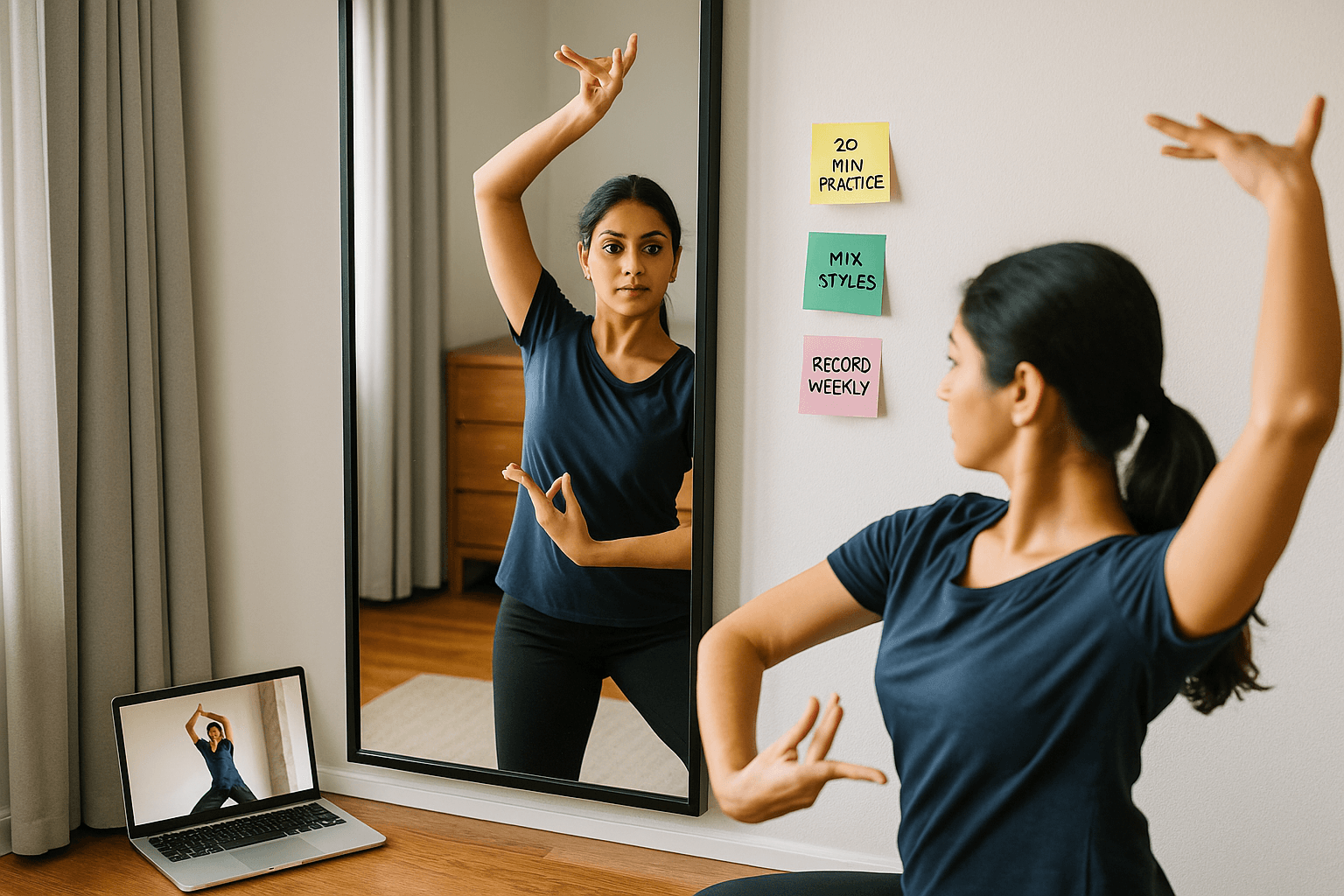 If you’ve ever searched for Indian dance classes near me, you’ve likely noticed the variety of choices available. But with so many styles—ranging from classical dance forms of India like Bharatanatyam to the lively beats of Bollywood—how do you decide which path is right for you? The good news is that there’s no single “correct” choice. It depends on your interests, goals, and even lifestyle. Let’s break it down.
If you’ve ever searched for Indian dance classes near me, you’ve likely noticed the variety of choices available. But with so many styles—ranging from classical dance forms of India like Bharatanatyam to the lively beats of Bollywood—how do you decide which path is right for you? The good news is that there’s no single “correct” choice. It depends on your interests, goals, and even lifestyle. Let’s break it down.
If you’re fascinated by culture, history, and storytelling, enrolling in Bharatanatyam classes near me could be the perfect fit. Traditional dance styles:
For learners abroad, Online Bharatanatyam classes make it possible to study this art form under experienced teachers, no matter where you live.
Maybe you’re looking for something more high-energy and modern. In that case, Bollywood or fusion styles might be your calling. When you search for Bollywood dance near me, you’ll find:
Curious? You can start from home with Online Bollywood dance, designed for beginners as well as experienced dancers.
One of the biggest decisions is whether to learn online or in person. Both have unique benefits:
No matter your choice, you can always test the waters with Book a trial class before committing long-term.
Some dancers begin with classical indian dance classes near me to build a strong base and later branch into Bollywood or fusion. Others start with modern styles and then develop an interest in tradition. The beauty of Indian dance is its flexibility—you don’t have to pick one forever.
So, ask yourself: do you want the discipline of tradition, the energy of modern styles, or a bit of both? Whatever your answer, the right class is waiting to welcome you.
One of the biggest challenges for any dancer—whether beginner or advanced—is maintaining consistency. You might feel excited in the beginning, but what happens when motivation dips or life gets in the way? The secret lies in building a system that keeps you moving, even on days when enthusiasm feels low.
Consistency in dance doesn’t just improve your moves—it strengthens your body, sharpens your memory, and boosts your confidence. So, how can you make sure you stay on track? Let’s break it down.
Consistency isn’t about being perfect—it’s about showing up. Some days you’ll dance with full energy; other days, you’ll only manage a short warm-up. Both count. Remember, every small step forward keeps you connected to your passion.
Think about this: wouldn’t it be amazing to look back a year from now and see how far you’ve come? That kind of transformation only happens when you choose persistence over perfection.
So, are you ready to commit to your dance journey and let consistency shape your growth?
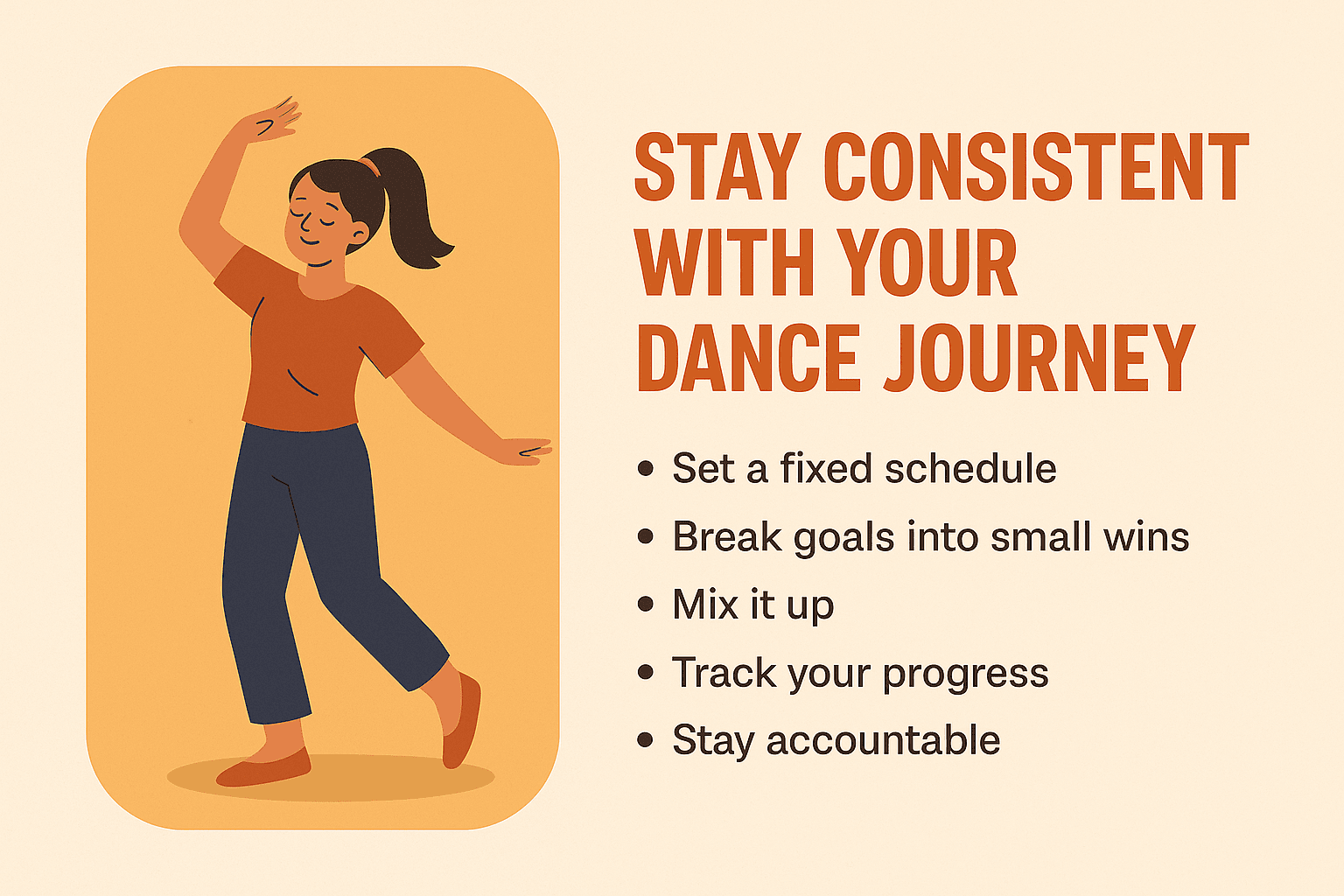 One of the most beautiful aspects of dance is that the learning never truly ends. Whether you’re taking your very first step in an Indian dance class near me or polishing advanced Bollywood dance moves, there’s always room to grow, refine, and discover new rhythms. But here’s the real question—how do you keep that spark alive while balancing work, studies, or family life?
One of the most beautiful aspects of dance is that the learning never truly ends. Whether you’re taking your very first step in an Indian dance class near me or polishing advanced Bollywood dance moves, there’s always room to grow, refine, and discover new rhythms. But here’s the real question—how do you keep that spark alive while balancing work, studies, or family life?
The answer lies in consistency and mindset. Think of your dance journey not as a race to the finish line but as a lifelong rhythm you can carry with you.
When you see dance as a lifelong journey instead of a short-term skill, every practice becomes rewarding. And the best part? You don’t need to look far—joining an Indian dance academy near me can open doors to guidance, inspiration, and a supportive community that grows with you.
So, what about you? Are you ready to embrace dance not just as a class, but as a joyful journey that keeps evolving with every beat?
Dance has always been more than just movement—it’s a language of expression, culture, and joy. Whether you’re drawn to the elegance of classical Indian dance or the energy of Bollywood, one thing remains constant: every step you take brings you closer to confidence, rhythm, and self-discovery.
If you’ve ever wondered “how do I learn dance at home?” or searched for an Indian dance class near me, now is the time to take that first step. With the flexibility of online Bollywood dance and Bharatanatyam classes, learning dance has never been more accessible. You don’t need a stage to start—you only need passion and the right guidance.
So, here’s the question for you: Are you ready to bring music, movement, and magic into your everyday life? Because the journey begins with a single decision—to dance. And when you choose to learn, you’re not just practicing steps; you’re creating memories, boosting confidence, and keeping tradition alive in your own way.
Don’t wait for the “perfect moment.” Create it. Begin your dance journey today, and let every step take you closer to the dancer you’ve always wanted to be.